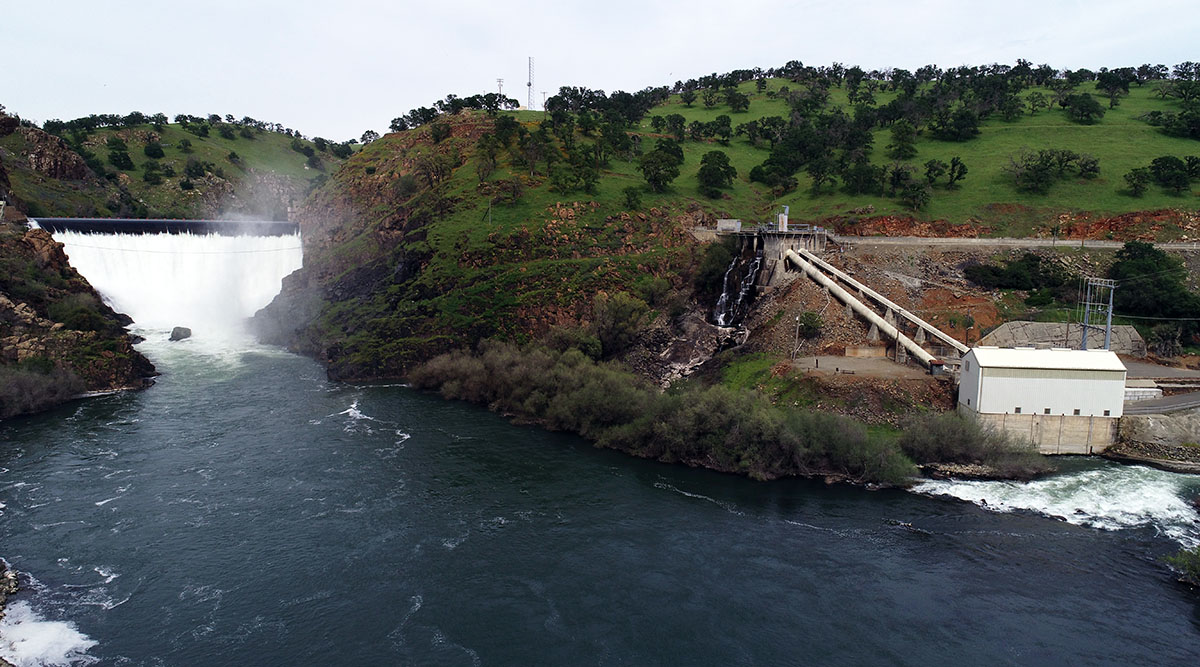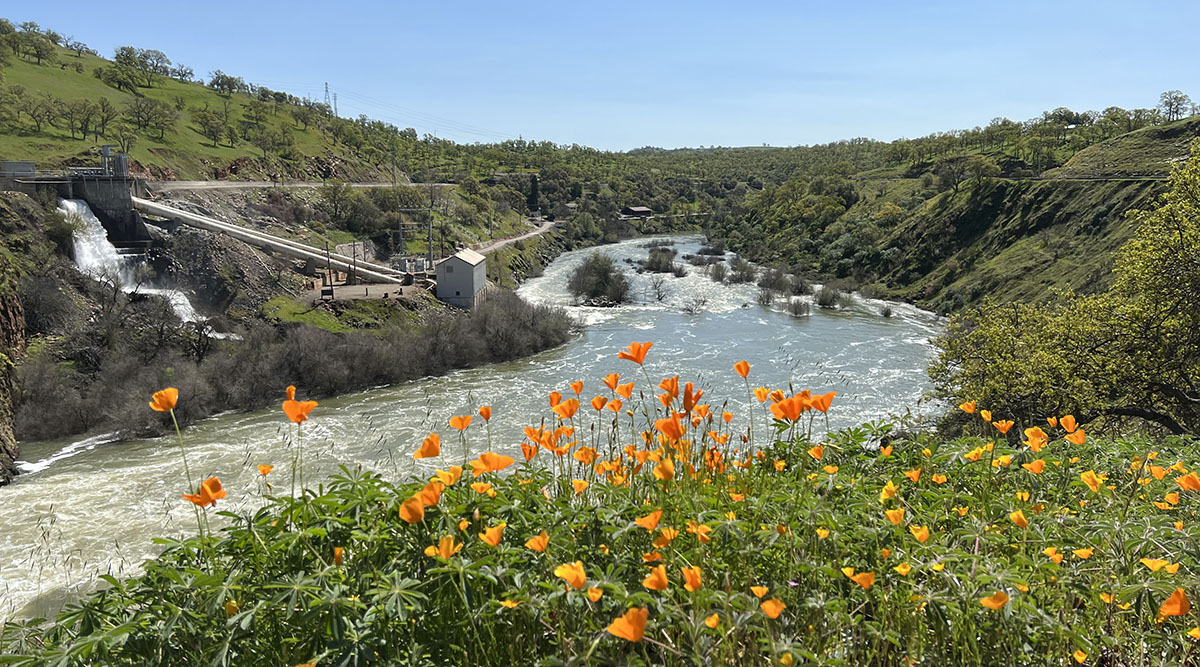La Grange Dam
Located about a mile and a half upstream of the town of La Grange on the Tuolumne River, the La Grange Dam is among the oldest dams still operating in California. When it was completed in 1893 it was the highest overflow dam in the United States, built at a cost of $550,000.
Unlike most dams, very little water is stored behind La Grange Dam instead, its purpose is to raise the level of the Tuolumne River so that water can be diverted into Turlock and Modesto Irrigation District’s canal systems.
Water is released upstream for the Don Pedro Powerhouse, where it flows through a steep canyon to the La Grange Dam. Once there, it can flow three different ways. It can flow into either the Turlock or Modesto Irrigation District tunnels – the head of each District’s canal system – or into the River. On occasions where water is abundant, it flows over the top of the dam and directly into the River.
In 1924, TID constructed the La Grange Powerhouse which is capable of generating five megawatts of clean, carbon-free power.
In 1923, an 18 inch concrete cap was added and in 1930 a 24 inch cap was added, making the height 131 feet.



